Basement Mold Removal: Understanding the Problem
Mold in basements is a persistent issue that can lead to structural damage and serious health risks. Basements often provide the perfect environment for mold growth due to their naturally cool, damp conditions and limited ventilation. If left untreated, mold spreads rapidly, impacting air quality, weakening structural components, and leading to costly repairs. Mold spores, which are microscopic and airborne, can infiltrate walls, flooring, furniture, and even the HVAC system, making it difficult to control once it has established itself.
Mold thrives in damp, poorly ventilated areas, making basements one of the most common locations for infestations. Poor drainage around the foundation, leaks from plumbing, and high humidity levels are common culprits that contribute to mold problems. Even minor water intrusions, such as condensation on pipes or water seepage through concrete walls, can create an ideal breeding ground for mold colonies. Once mold starts growing, it releases spores into the air, which can travel to other parts of the house, exacerbating the problem.
Basement mold removal requires a multi-step approach that involves identifying the source of moisture, using proper cleaning techniques, and taking preventive measures to ensure it doesn’t return. The first step in mold remediation is to address the root cause of moisture. Without eliminating excess moisture, any mold removal efforts will be temporary, as the mold will simply grow back. Homeowners should check for plumbing leaks, improve basement ventilation, and consider using a dehumidifier to keep humidity levels below 50%. Additionally, sealing foundation cracks, ensuring proper drainage, and using waterproof coatings on basement walls can significantly reduce the likelihood of mold growth.
Once the moisture problem is addressed, proper cleaning techniques should be applied. Non-porous surfaces, such as concrete and tile, can be scrubbed with a mixture of detergent and water, while heavily contaminated materials like drywall, insulation, and carpeting may need to be discarded. Natural cleaning solutions such as white vinegar and baking soda can help remove light mold growth, whereas stronger chemical treatments like bleach or commercial mold removers may be necessary for severe infestations. Protective gear, including gloves, masks, and goggles, should always be worn during mold removal to prevent exposure to harmful spores.
By understanding how mold forms and spreads, homeowners can take proactive steps to maintain a mold-free basement. Regular inspections, proper ventilation, and humidity control are essential for long-term mold prevention. Taking these measures not only protects the home’s structure but also safeguards the health of its occupants, reducing the risk of respiratory issues, allergies, and other health complications associated with mold exposure.
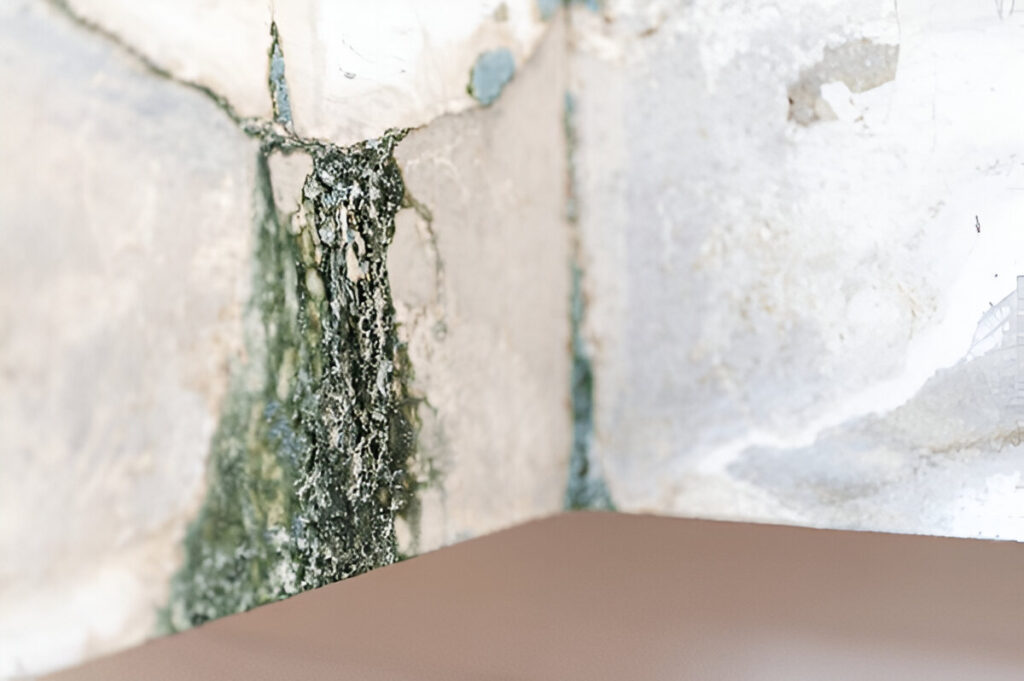
Signs of Mold in Basement: How to Identify the Problem
Before taking action, it is essential to confirm the presence of mold, as failing to properly identify and address it can lead to serious health and structural issues. Many homeowners may not notice mold right away because it often grows in hidden or hard to reach areas, such as behind walls, under flooring, inside insulation, and in crawl spaces. Since mold thrives in dark, damp, and humid environments, basements become a prime location for infestations. Identifying mold early is crucial in preventing its spread and minimizing potential damage.
- Musty odor: One of the most common indicators of mold in basements is a strong, unpleasant smell. Often described as damp, stale, or earthy, this odor becomes particularly noticeable in enclosed spaces with poor airflow. Even if no visible mold is present, a persistent musty smell often signals hidden mold growth inside walls or beneath flooring.
- Visible mold patches: Mold can appear in various colors, including black, green, white, yellow, or even orange. It may grow in irregular patterns on basement walls, ceilings, wooden surfaces, and furniture. Mold patches often start as small spots but can quickly expand if moisture problems persist. In some cases, these patches may appear fuzzy or slimy, depending on the mold type and the surface it grows on.
- Damp conditions: High humidity levels, condensation on windows and pipes, or water stains on walls and floors create the perfect environment for mold to thrive. If a basement frequently feels damp, it is essential to address moisture problems immediately, as prolonged exposure to excessive moisture can accelerate mold growth.
- Warped or peeling paint: When moisture seeps into walls or ceilings, it causes paint to bubble, crack, or peel. This often indicates trapped moisture behind the surface, which can lead to mold formation underneath. Homeowners should inspect areas where paint damage appears, as these spots often conceal mold infestations.
- Increased allergy symptoms: Mold exposure can also have health-related warning signs, particularly for individuals with allergies, asthma, or respiratory conditions. Frequent sneezing, coughing, watery eyes, nasal congestion, or skin irritation may indicate the presence of airborne mold spores. Prolonged exposure can worsen existing conditions and lead to chronic respiratory issues, sinus infections, and fatigue.
- Mold testing and professional assessment: To accurately identify mold, homeowners can use mold testing kits, which are available at hardware stores. These kits allow homeowners to take air or surface samples and send them to a lab for analysis. However, for more accurate results, it is often best to hire professionals for an assessment. Certified mold inspectors use advanced tools, such as moisture meters, infrared cameras, and air quality tests, to detect mold growth, even in hidden areas. A professional evaluation provides a comprehensive understanding of the mold problem and helps determine the best course of action for removal and prevention.
To accurately identify mold, homeowners can use mold testing kits or hire professionals for an assessment.
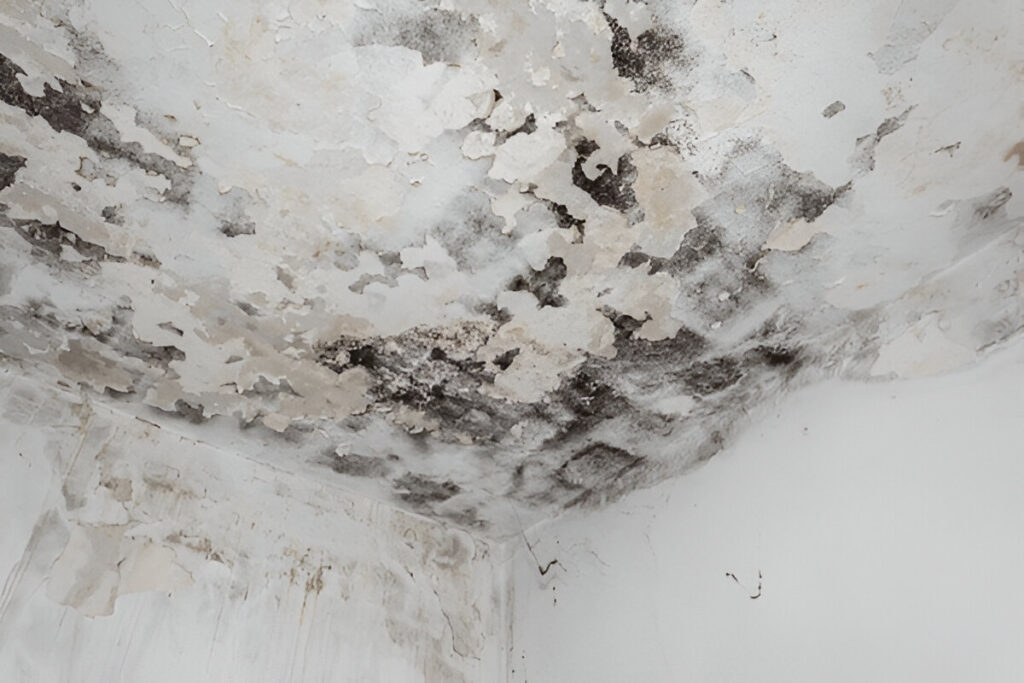
Health Risks of Basement Mold: Why It’s a Serious Issue
Exposure to basement mold can cause numerous health problems, particularly for individuals with asthma, allergies, or weakened immune systems. Mold spores become airborne and can be inhaled, triggering a range of mild to severe health issues. The longer a person is exposed to mold, the more likely they are to develop persistent symptoms or long-term complications.
- Respiratory issues: Mold spores can irritate the respiratory system, leading to frequent coughing, wheezing, shortness of breath, and chest tightness. Individuals with asthma may experience worsened symptoms and increased sensitivity to airborne allergens. Prolonged exposure can contribute to chronic bronchitis or lung infections, particularly in damp environments where mold thrives.
- Skin irritation and allergic reactions: Direct contact with mold-contaminated surfaces can cause skin irritation, redness, and itchiness. In some cases, exposure can trigger more severe allergic reactions, including hives and swelling. People with sensitive skin or pre-existing allergies may develop eczema-like rashes or experience an increase in dermatitis symptoms.
- Chronic sinus infections and persistent headaches: Mold exposure can lead to ongoing sinus congestion, nasal irritation, and postnasal drip, which may result in chronic sinus infections. The inflammation caused by mold spores can also trigger frequent headaches or migraines, especially in individuals who are sensitive to airborne allergens.
- Fatigue and dizziness: Prolonged exposure to mold toxins, particularly in enclosed, unventilated spaces like basements, can lead to a constant feeling of exhaustion. Many individuals report experiencing dizziness, brain fog, and difficulty concentrating due to the impact of mold toxins on the central nervous system. This can be especially concerning for individuals who spend significant time in mold-contaminated environments.
- Long-term health complications: Exposure to toxic black mold (Stachybotrys chartarum) is particularly dangerous, as it releases mycotoxins that can cause neurological issues, immune system suppression, and even long-term cognitive problems. In severe cases, mold exposure has been linked to memory loss, difficulty processing information, and an increased risk of respiratory diseases such as chronic obstructive pulmonary disease (COPD). Individuals with compromised immune systems are especially vulnerable to fungal infections, which can become systemic and lead to severe health complications.
Best Mold Removal Techniques: How to Get Rid of Basement Mold
If you’ve identified mold in your basement, follow these steps to remove it:
- Wear Protective Gear: Use gloves, a mask, and safety goggles to avoid mold spores.
- Isolate the Area: Close doors and cover vents to prevent mold spores from spreading to other parts of the house.
- Scrub Affected Surfaces: Mix warm water and detergent to clean non-porous surfaces like concrete and tiles.
- Use a HEPA Vacuum: This helps remove mold spores from carpets, furniture, and hard-to-reach areas.
- Remove Contaminated Materials: Discard mold-infested drywall, carpets, and insulation.
- Dry the Area Completely: Use fans and dehumidifiers to eliminate moisture.
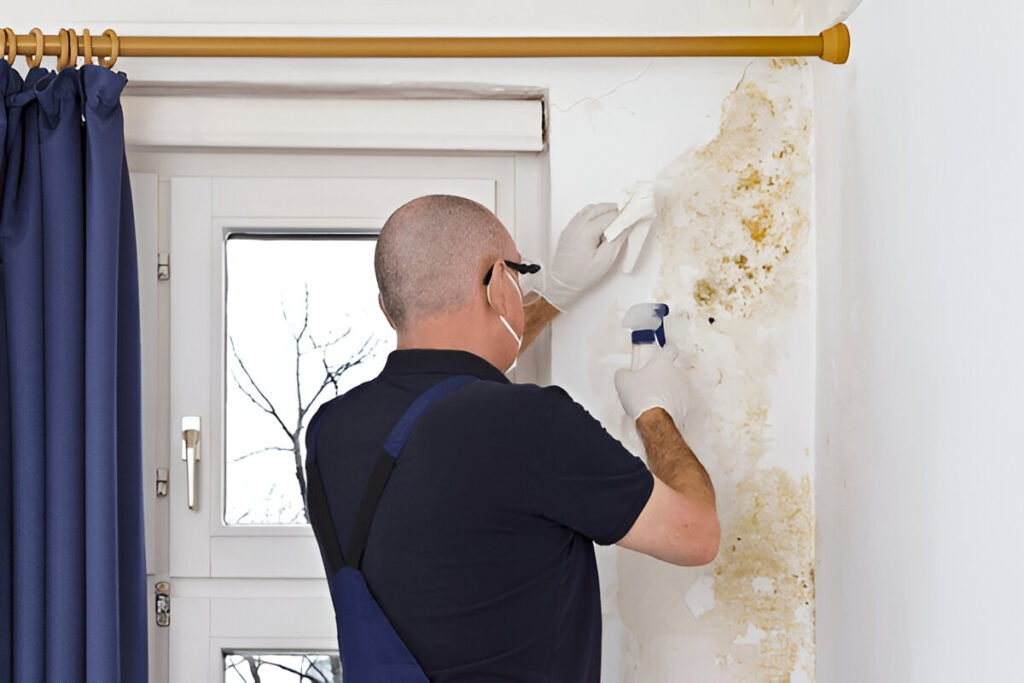
Best Basement Mold Removal Solutions: Natural vs. Chemical Methods
Natural Basement Mold Removal Solutions
- Vinegar: Spray undiluted white vinegar onto mold and let it sit for an hour before wiping.
- Baking Soda: Mix with water to create a paste, apply it to moldy surfaces, and scrub thoroughly.
- Tea Tree Oil: A natural antifungal agent that helps prevent mold regrowth.
- Hydrogen Peroxide: Kills mold effectively and prevents staining on surfaces.
Chemical Basement Mold Removers
- Bleach: A strong disinfectant that kills mold but doesn’t prevent regrowth.
- Ammonia: Effective on non-porous surfaces but should never be mixed with bleach.
- Commercial Mold Removers: Stronger solutions available in hardware stores.
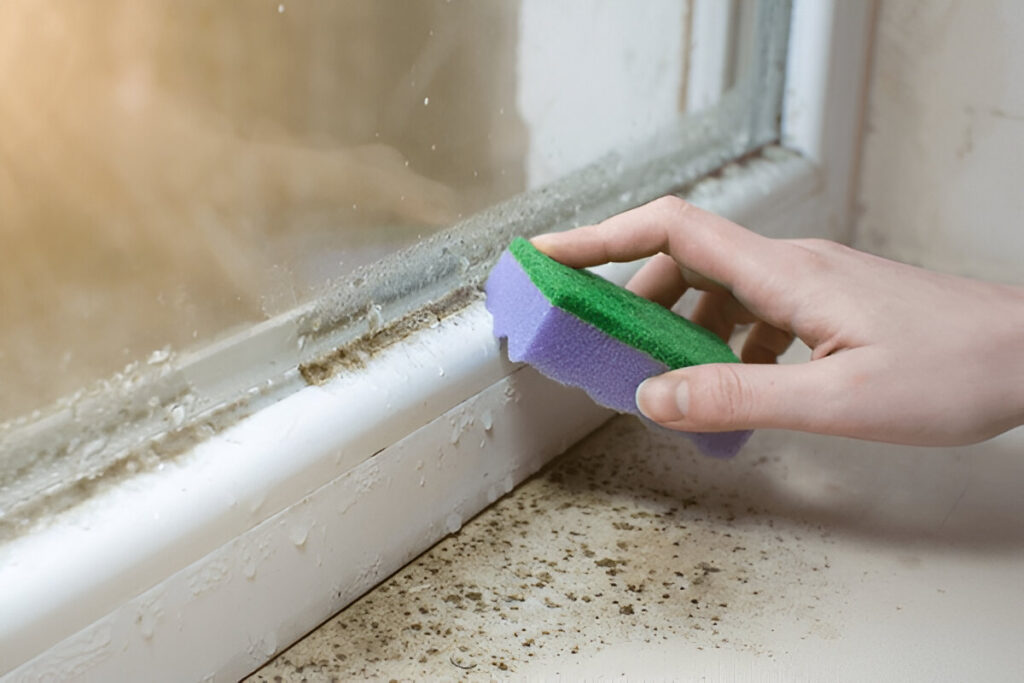
Waterproofing Solutions for Basements: Fixing Moisture Issues
To prevent mold regrowth, tackle moisture problems by:
- Fixing leaks: Repair any cracks in walls, roofs, and plumbing.
- Improving ventilation: Use dehumidifiers and fans to maintain low humidity levels.
- Maintaining gutters: Ensure downspouts direct rainwater away from the foundation.
- Applying waterproof sealants: Special coatings on walls and floors can help keep moisture out.
- Installing a sump pump: Removes excess water and prevents flooding in basements.
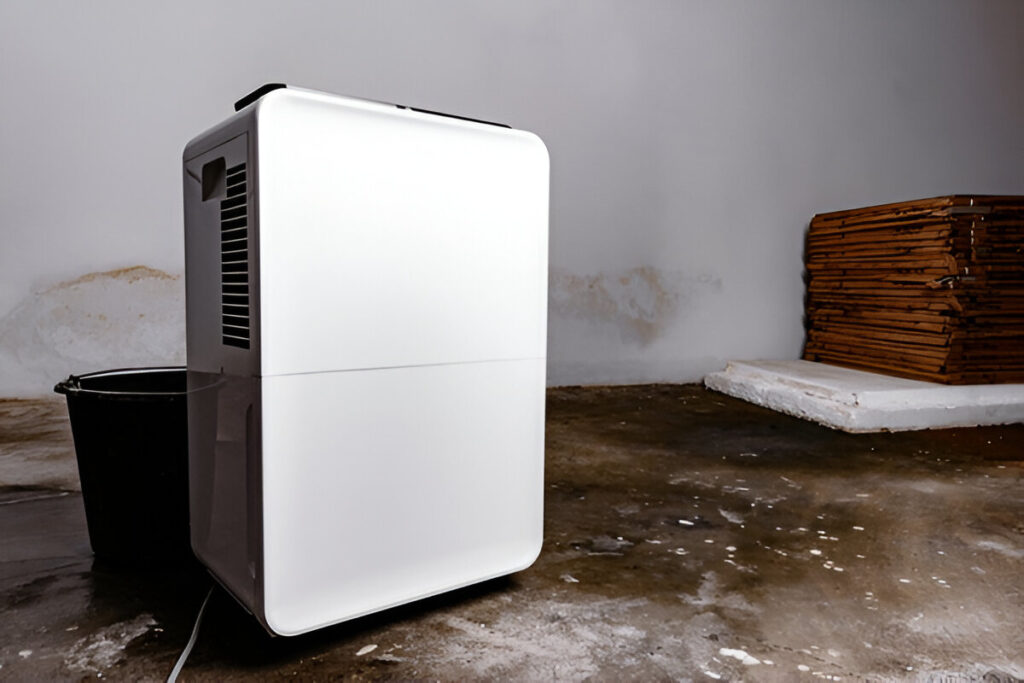
Preventing Mold in Basements: Long-Term Solutions
After completing basement mold remediation, take preventive measures:
- Install basement waterproofing systems to reduce moisture.
- Use mold-resistant materials like specialized paint, drywall, and insulation.
- Regular inspections and cleaning to stop mold from developing again.
- Keep humidity levels below 50%: Use a hygrometer to monitor basement humidity levels.
- Store items in plastic bins: Avoid using cardboard boxes, as they absorb moisture and encourage mold growth.
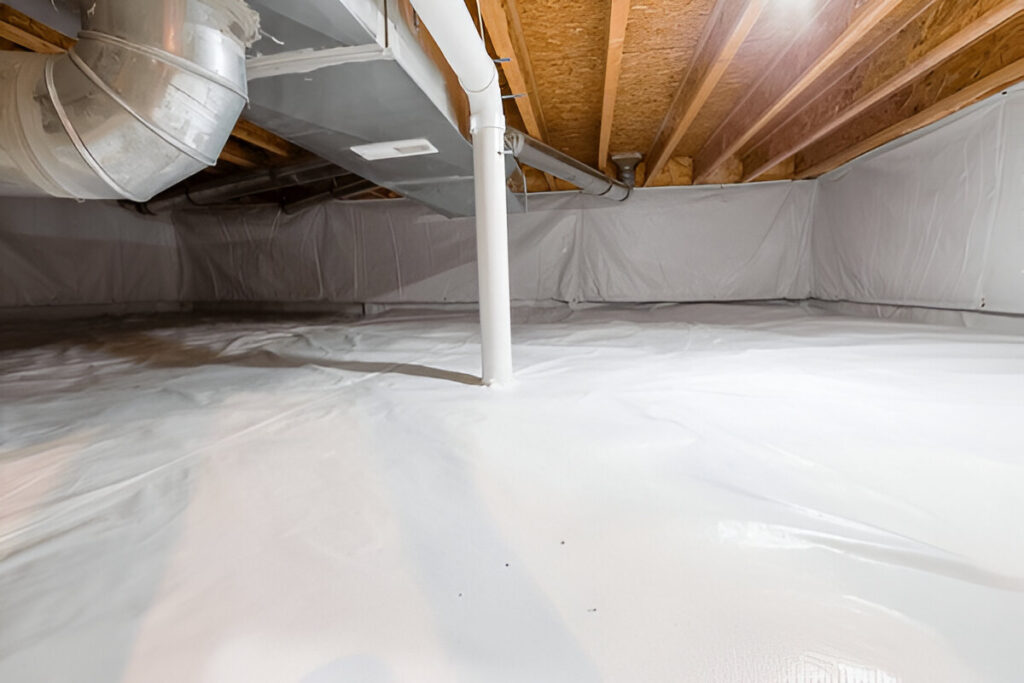
Mold Remediation Services: When to Call Professionals
If mold covers more than 10 square feet, consider professional mold remediation services. Experts are needed when:
- Mold growth is extensive and hard to remove manually.
- Structural damage has occurred due to long-term mold exposure.
- Mold returns repeatedly despite cleaning efforts.
- Health symptoms worsen: If household members experience severe reactions, professional removal is essential.

Conclusion
Basement mold removal is crucial for maintaining a healthy home environment. By identifying, eliminating, and preventing mold growth, you can protect your home and family from health risks and costly damage. Whether you choose DIY solutions or hire mold remediation services, taking action promptly is key.
For expert assistance, consider consulting DMV Waterproofing, a trusted provider of waterproofing solutions for basements and professional mold removal. With the right approach, you can keep your basement mold-free and maintain a safe living space.

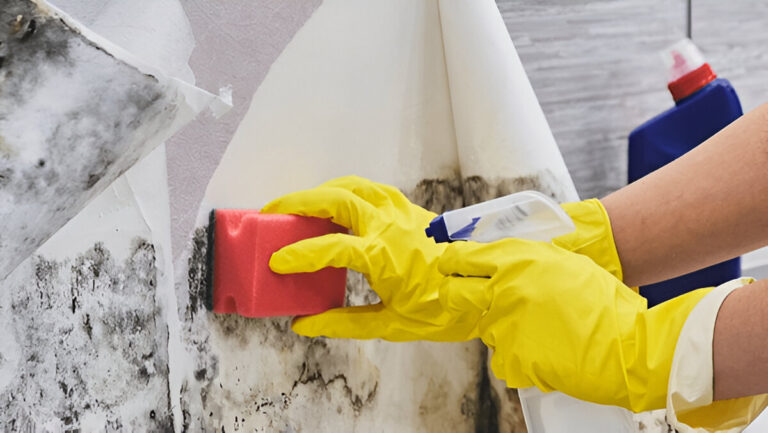
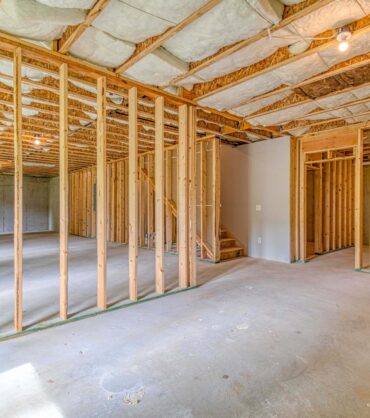
![[GetPaidStock.com]-680786795b816 [GetPaidStock.com]-680786795b816](https://dmvwp.com/wp-content/uploads/2025/04/GetPaidStock.com-680786795b816-370x418.jpg)
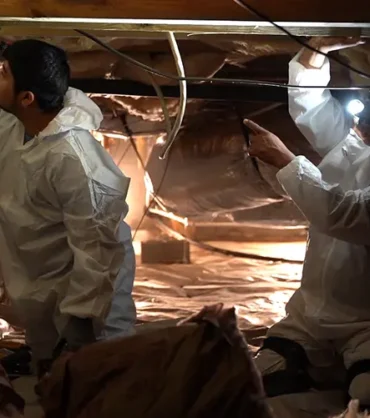
![[GetPaidStock.com]-682c400c87c15 [GetPaidStock.com]-682c400c87c15](https://dmvwp.com/wp-content/uploads/2025/04/GetPaidStock.com-682c400c87c15-370x418.jpg)
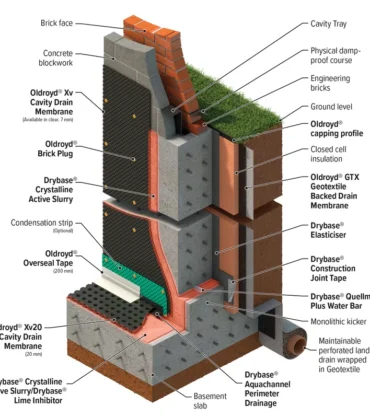
![[GetPaidStock.com]-682c413fa898e [GetPaidStock.com]-682c413fa898e](https://dmvwp.com/wp-content/uploads/2025/03/GetPaidStock.com-682c413fa898e-370x418.jpg)